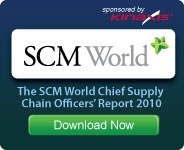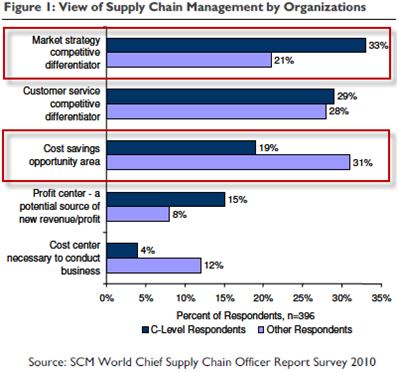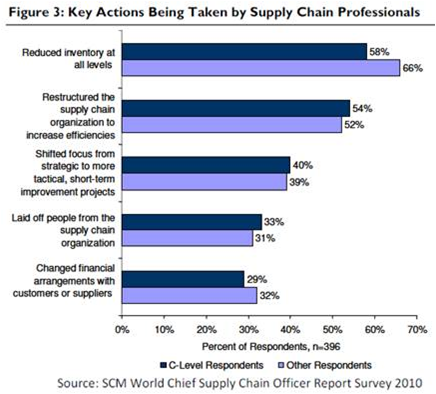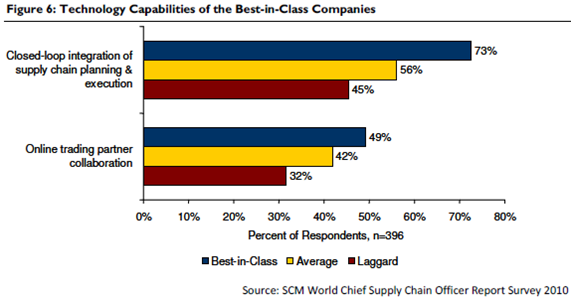The C-suite & SCM
Much has changed over the years since the 1980’s when few knew the term Supply Chain Management (SCM) and even fewer knew what it meant, including me. The closest one could come to study SCM at university was Operations Research or Industrial Engineering. Having done this at the graduate level, I can attest that the focus was very much on factory optimization with little emphasis on the inter-connectivity between demand, production, and supply. I remember going to a pulp and paper manufacturer in Florida in the mid-1980’s because they wanted to optimize the utilization of their digesters, even though they were at over 90% utilization. It didn’t take long to discover that there was over 9 months of finished goods and over 4 months of raw material on site. I had no idea and never bothered to find out how much finished goods inventory there was in the distribution channel. Clearly, the company’s supply chain problems were not related to the utilization of their digesters. However we had been brought by the plant manager to optimize the digesters and he had no responsibility for either raw material (Purchasing) or finished goods (Sales) inventories. The question we were faced with was who owns the problem? We could have gone to the Sales VP or to the Purchasing Director, but they each only owned a part of the problem. Notice also the titles of the people responsible for Sales, Production, and Purchasing. Eventually we managed to get a meeting with the CFO on the pretext of getting data for production costs. The CFO was a lot more receptive to our message but really didn’t own the problem either, so he sent us to the CEO. He thought we were a bunch of engineers, and he was right. We couldn’t really articulate the issue in a manner in which he would understand. Somehow, we managed to get enough across to the CEO to ensure that project focus changed to profitability rather than capacity utilization.
And yet, in a recent study by SCM World and Aberdeen titled “The Evolving Role of the Chief Supply Chain Officer”, there still appears to be a mismatch between the expectations of the C-suite and the people actually running the supply chain. There have been a lot of positive developments since the 1980’s including the establishment of university courses and the knowledge of the function and strategic value of SCM within the C-Suite. The use of the term “chief supply chain officer” is a testament to this change. While the gulf between the C-suite and operations has narrowed, the very first chart in the SCM World report indicates a mismatch in objectives and perception.
The good news is that the C-suite is focused on using the supply chain as a competitive weapon; however, it reminds me of Peter Drucker’s definition of the difference between being effective and efficient.
"Efficiency is doing things right; Effectiveness is doing the right things.”
Perhaps this is the correct split in which the C-suite focuses on what should be done, while the rest of the organization focuses on doing this in the most efficient manner. The SCM World report indicates that there is a much closer alignment between the C-suite and the rest of the organization when it comes to the areas of efficiency gains. However, even here it appears that the C-suite has a greater focus on the more strategic goal of restructuring the supply chain organization (effectiveness), whereas the rest of the organization has a greater focus on reducing inventory (efficiency).
I think there is still the need for people in the supply chain to understand the objectives and perspectives of the C-suite and to align themselves with these, and to communicate in the language of the C-suite. The arrival of the “chief supply chain officer” in the C-suite is certain to close this gap. Planning & Execution Some months ago, Lora Cecere wrote a blog post about the gap between planning and execution, what she calls the supply chain black hole. Lora states that:
Technologies are evolving to eliminate the supply chain black hole. In this first generation of supply chain applications, we have built a fixed response with very little sensing. How can we effectively respond when we cannot sense?
Lora goes on to state that
The first generation of supply chain applications got us started down the path, but they must be cast-off to move forward. ERP is not the backbone of supply chain management for the future. The new technologies will not come from the ERP consolidators. We are at a discontinuity between inside-out and outside-in technologies. The new technologies will be outside-in. They will help us sense before responding. They will help drive an intelligent response.
Lora’s statements are supported very strongly by the findings of the SCM World study, with very clear differentiation between the best-in-class SCM companies and those that received an average rating. In the case of closing the gaps between planning and execution, there is a huge difference of 17%, and 28% to the laggards. While not as dramatic, there is also a significant difference in the degree to which information from trading partners is included in SCM processes.
How can you sense what is happening in your supply chain quickly and effectively if you do not get demand or supply signals from your trading partners? Or as Lora states, “how can we effectively respond when we cannot sense?” Sensing is only half of this statement, responding is the other part. How can you have an effective response without closed-loop integration between supply chain planning and execution? As Nick LaHowchic states in an interview in SCDigest,
Companies need to respond much faster tactically. You can’t wait for a monthly S&OP meeting to make most of those tactical decisions any more.
Summary
These commentators and the results from the SCM World survey clearly indicate the importance and benefits of closing the gaps between planning and execution. The business drivers behind this need start from customer expectations for reduced order-to-delivery lead times and competitive pressures to bring new products to market in ever shorter cycles. But the gap is wider than just between supply chain planning and execution. It starts from the gap between financial plans and supply chain planning. This is, of course, the primary gap between the C-suite and the supply chain function. One talks in financial terms and the other talks on operational terms. One talks effectiveness, the other talks efficiency. Perhaps the answer is to have a single integrated planning and execution system, from business planning all the way to execution, including S&OP in between. Only then can we bring these gaps together. Any change in the business plan will be reflected immediately as changes of goals and objectives for operations. Equally, changes in planning and execution will give the C-suite visibility in future performance.
What are your thoughts? Do these gaps exist in your organization? How effectively do you communicate with the C-suite?
Additional Resources
- Supply chain management frequently asked questions








Leave a Reply